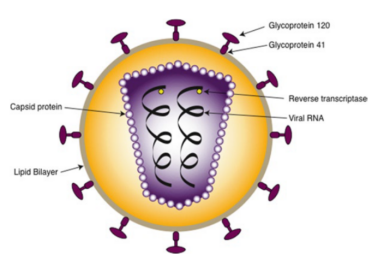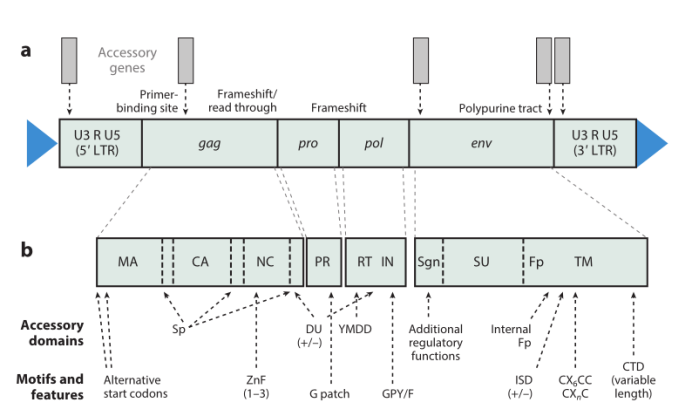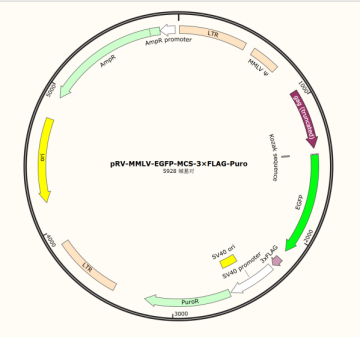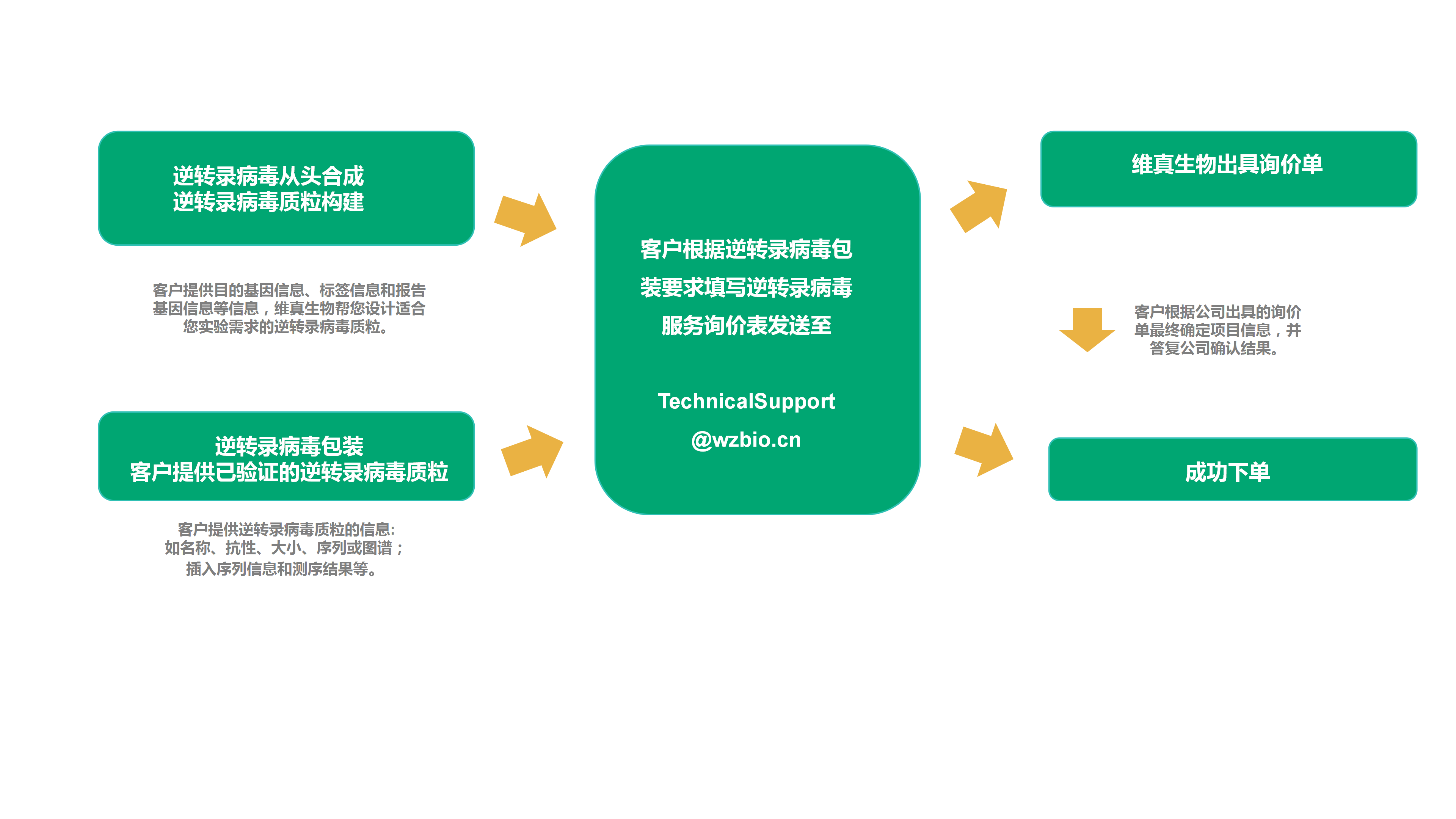Reverse Transcription Virus Packaging Service
一、Introduction to Retroviruses
Retroviruses, also known as retroviruses, are a class of RNA viruses that require the action of reverse transcriptase to first convert RNA into cDNA. The newly synthesized cDNA is inserted into the host's nuclear DNA, and through replication, transcription, and translation of the host DNA, it achieves the purpose of amplification. The Retroviridae family can be divided into seven genera: Alpharetrovirus, Betaretrovirus, Gammaretrovirus, Deltaretrovirus, Epsilonretrovirus, Lentivirus, and Spumavirus.
Reverse Transcription Virus Structure
Retroviruses are a type of an RNA virus with long terminal repeat (LTR) sequences at both ends, the virion exhibits icosahedral symmetry and is spherical with an envelope, surface spikes, and a size of approximately 80-120 nm. Its basic structure comprises envelope proteins, matrix, capsid proteins, nucleocapsid proteins, and enzymes necessary for viral replication, including reverse transcriptase, integrase, and protease.

Reverse Transcriptase Virus Structure Diagram
Retrovirus genome
The genome of retroviruses is diploid and contains two identical single stranded RNAs (+ssRNAs). It is a continuous linear single stranded RNA with a length of 7-12 kb. The genome of a simple retrovirus consists of three main coding segments and a small coding domain, with the main segments containing three genes: gag, pol, and env The gag gene encodes structural proteins such as viral capsid and matrix, the pol gene encodes reverse transcriptase (p66/p51), proteolytic enzyme, and integrase, and the env gene encodes two envelope glycoproteins, gpl20 and gp41; The small coding domain contains the pregene pro, which encodes viral protease.
Retroviral genome structure diagram
(Endogenous Retroviruses in the Genomics Era)
The process of retroviral infection in cells
Retroviruses can only replicate within host cells, mainly including the following processes: virus adsorption on the cell surface, binding of virus envelope proteins to cell surface receptors, fusion of the envelope and cell membrane, entry of virus particles into the cell, reverse transcription of genomic RNA into double stranded DNA, entry into the cell nucleus and integration into host chromatin, transcription to produce viral RNA; The viral RNA migrates from the nucleus to the cytoplasm, translates into viral proteins, and after self-assembly, wraps around the viral genome RNA to form immature viral particles, which are released outside the cell in a budding manner and cleaved by viral proteases to form mature progeny viral particles.
Retroviruses can bind to various cell surface proteins and enter cells, with a wide range of host cells mainly determined by the envelope protein (env) on the surface of viral particles.
Characteristics of retroviruses
1. Retroviruses have a wide range of hosts, can infect multiple cell types, and have a high integration rate;
2. Retroviruses can integrate with host cell DNA and mediate stable and long-term expression of exogenous genes;
3. Retroviruses mainly infect dividing cells and are suitable for stem cell related research.
二、Introduction to Retroviral Packaging Services
The retroviral vector system usually refers to the gamma retrovirus, which consists of a retroviral expression vector, an auxiliary vector (expressing the proteins required for virus packaging), and a packaging cell line. Due to the ability of retroviral vectors to convert single stranded RNA (ssRNA) genomes into dsDNA molecules, they can efficiently and stably integrate exogenous genes into mammalian cell genomes. Currently, they have been widely used in gene transfer vector systems. Retroviruses typically refer to those called gamma retroviruses, including MMLV (Moroni murine leukemia retrovirus) and MSCV (murine stem cell virus). One of its advantages is that the vector genome can be permanently integrated into the host genome, allowing for long-term stable expression of transgenes. However, due to the inability to penetrate the nuclear membrane, cells can only be infected through incomplete nuclear membranes during cell division, thus only cells in the dividing phase can be infected. Its disadvantages are mainly reflected in the small carrier capacity and the low virus titer of the packaging. From the perspective of viral applications, MMLV can efficiently integrate exogenous genes into the host genome as a viral vector, and is also popular in IPSC preparation. MSCV is more suitable for transgenic expression of embryonic stem cells, embryonic cancer cells, hematopoietic stem cells, etc.
The following is a schematic diagram of retroviral packaging:
Weizhen Biotechnology can now provide all service items from plasmid construction to retroviral packaging, and can be customized according to your experimental needs. The following is a schematic diagram of the MMLV carrier:
Service Process
Weizhen Biotechnology can now provide all services from plasmid construction to retroviral packaging, and can be customized according to your experimental needs. For more information, please call 400-0772566 or 13012994257.










